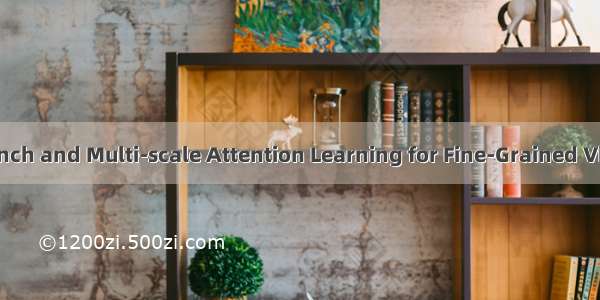
这是一篇发表在CVPR上关于Zero-shot Learning的文章。
论文的进步
①本文主要针对 fine-grained 分类
②基于attribute的dense attention,为每个attribute定位最准确的图像区域,生成 attribute feature
③使用第a个 attribute中的words的平均 GloVe representations(GloVe model trained on Wikipedia articles.)获取 attribute semantic vector;对齐 attribute feature和 attribute semantic vector,得到一个vector of attribute scores;而不是直接对齐 class semantic vector和 global features;以捕捉更加细节的信息。
④特别的,用一个attention调整attribute scores以更好捕捉各个attribute的discriminative power,使得本模型能处理好classes that are different in only a few attributes
总体框架图
具体模型
①将一张 input图像分成 R个 regions ,分别抽取特征得到 region features ,记 , 通过本文提出的 attention module g(.)为每个 attribute计算其 attention feature,其中αr为选取第r个的比例。即 attribute-based spatial attention模块
②含A个attributes的类别c的semantic vector 表示为 , 其中 za 指类别c中含有第a个attribute的score
③对齐上面得到的 attention features和 attribute semantic vectors ,计算图像中某attribute的存在与否。得到一个 vector of attribute scores ei,对应图片中是否出现各个attribute. 将该vector与 class semantic vector相似度最大化,计算分类到第i类中的得分 si
④上面(5)的问题,每个 attribute都对class score 有影响。fine-grained分类中大多数 attributes相同,仅个别 attributes有影响。用一个 attention over attributes调整各 attribute 贡献
⑤ 用 cross-entropy loss 最小化 model prediction 和 the ground-truth label 的距离(8)。为了解决bias towards seen classes的问题,用一个self-calibration loss调整unseen classes的probability来弥补(10)。但是(10)有个问题:训练图片一定是 seen,(10)降低了seen概率,提高unseen概率,不想要这样的效果。改进版(11):使得训练时在unseen上的概率非0的同时使它很低
训练
总loss:
inference时候:
实验(v.s. SOTA)
求点赞
如果对你有帮助,还请点赞或留言。让我知道自己做的东西使有价值的,让我有动力隔着网线继续更新下去














